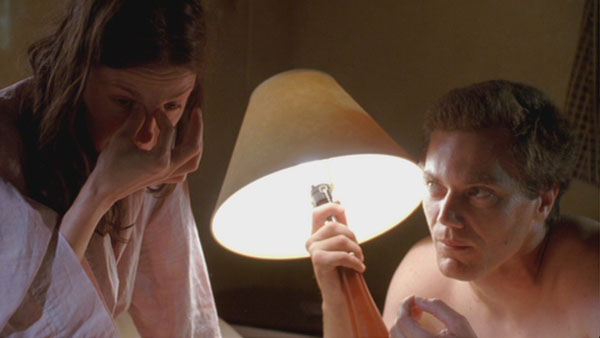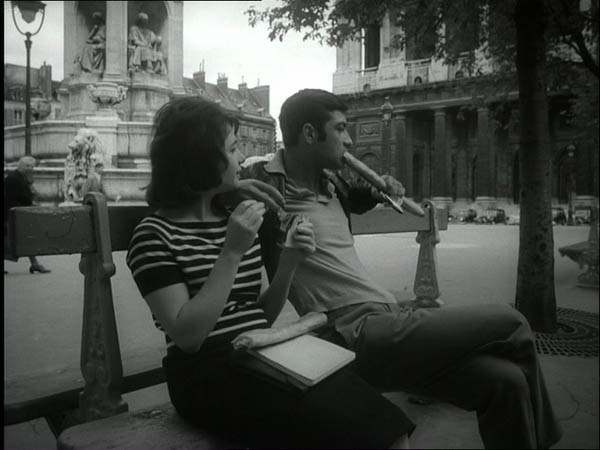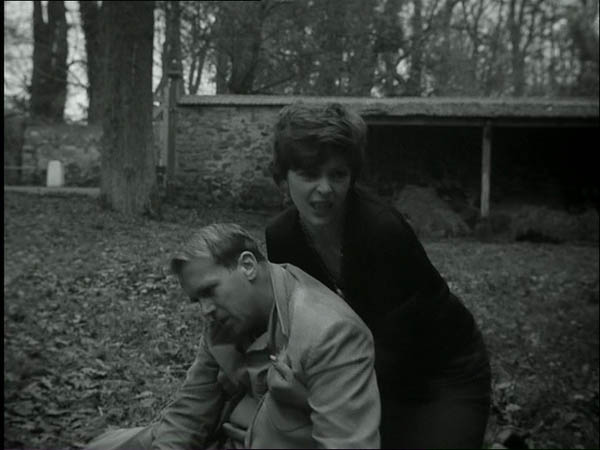One week in 1953, things went very badly for military scientist Frank Olson (played by Peter Saarsgard in reenactment footage). After he’s given LSD at a cabin getaway, he does something wrong (“they laughed at me”) then asks to be fired from his job. Instead he’s escorted to NYC, taken to see a psychiatrist (actually an allergist) and a magician, and one night he goes out the window of his hotel room and falls to his death. Few specifics are known for sure – what happened in the cabin, who else was in the hotel room, what the NYC trip was even for – but Frank’s son Eric has spent six decades learning all he can, trying to piece it together. So the film follows his investigation, fleshing out the story more and more as he learns details over the decades from court cases and document searches and unofficial visits.
Eric’s collage art must have inspired some of Morris’s compositions:

Dr. Balaban… I thought this was Morris and his interrotron when I first saw it:

Saarsgard is lost in the reenactment scenes, dazed or drugged or having a breakdown, and we barely see or discuss him behaving normally before the fateful week. Other actors hover about, such as Tim Blake Nelson as sinister boss Gottlieb (who once tried to assassinate Lumumba) and Bob Balaban as the allergist, but these scenes never quite come together, because the investigation doesn’t. We get close enough to make assumptions – that Frank was dropped out the window, staged as a suicide – but it all leads up to the terrible final moments of the Eric Olson interview:
“I remembered my father but I forgot who I was… you become lost in a sea of questions, all of which pertain to the other, none of which pertain to yourself… Because the value of the lost one is infinite, the sacrifice becomes infinite.”
It’s a powerful ending, and I love some of the editing tricks, echoing and split-screening the interview images. But something is off with the big-picture editing – the episodes were either meant to be watched a week apart (watching two in one sitting yields too little progress, too much repetition) or they had enough material for four good episodes and extended it to six when they got the netflix deal.
The Tabloid television setup:

chemist Robert Lashbrook:

Lawrence Garcia in the new Cinema Scope:
Uncertainty, unknowability, and the nature of truth are subjects that Morris has revisited throughout his career, specifically in relation to (American) structures and systems of authority. And despite its overt epistemological explorations, conspiratorial tone, and more unconventional trappings, Wormwood still bears the hallmarks of traditional journalistic reportage. But there’s been a marked change as well: the relative certainty of something like the Randall Dale Adams case — built around a clear miscarriage of justice, with a self-evident corrective goal — has been traded in for McNamara’s fog, Rumsfeld’s flurry of memos (nicknamed “snowflakes”), or the recurring image of the sea in The Unknown Known. It’s a shift from thin blue line to churning, Rorschachian haze.

























